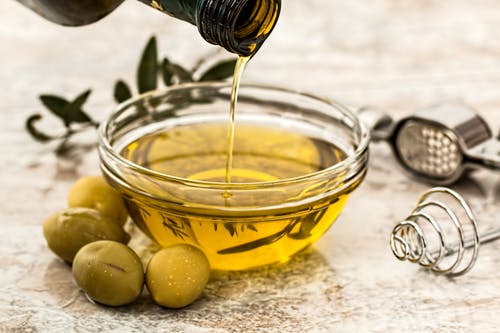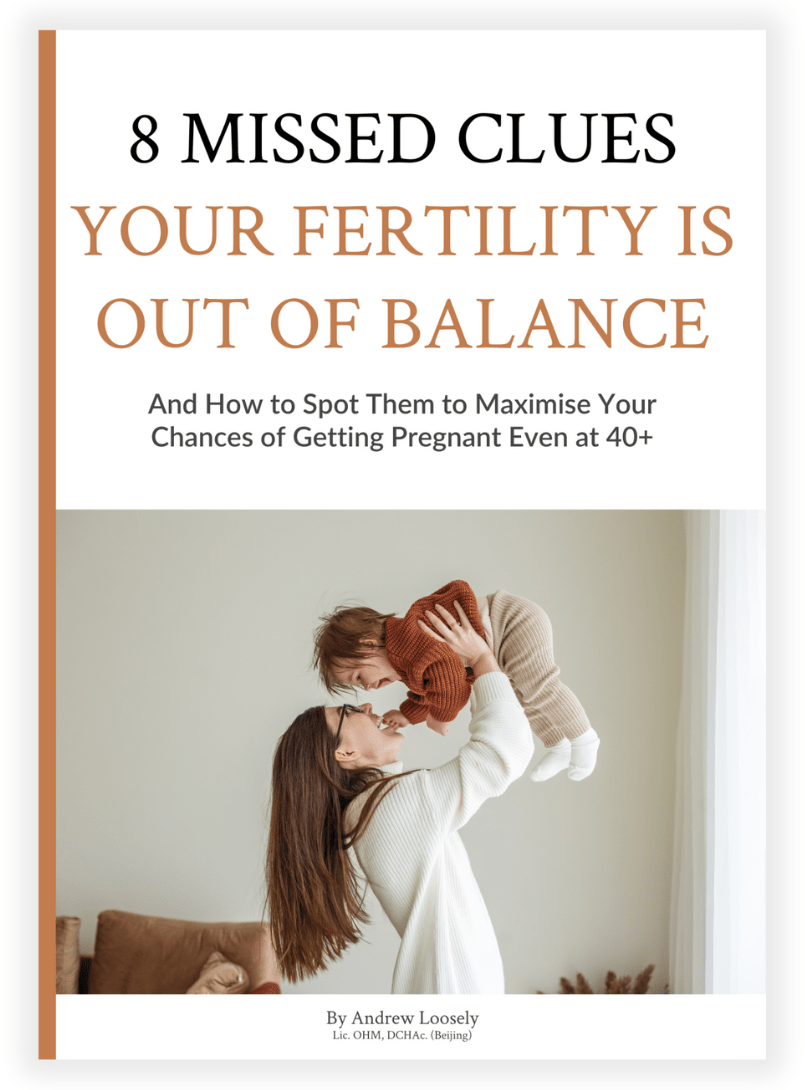Are plant oils bad for your fertility?
If you’re not consuming the right type of plant oils at the right quantity, there’s a chance that your health and fertility are being negatively affected.

You may already know that your body requires a selection of fats in your diet, to stay healthy and fertile.
Two key fat types we require are omega-6 and omega-3.
These fats have different effects on our health as follows:
- Omega – 6 – intake at the right level is vital for general and fertility health. But when consumed at high levels it has inflammatory effects
- Omega-3 – has qualities that help the balancing of omega-6 and may reduce its inflammatory effects, when consumed at the right ratio to omega-6
To stay healthy, the important factor with these fats is the ratio between them.
One method for reducing the omega-6 inflammatory properties, is to consume more omega-3, which is what many people on a fertility journey are told to do.
In a recent poll we found that over 80% of my online community (10,000+ people) are using an omega-3 rich oil, usually fish oil, to try to increase their omega-3 to 6 balance.
But.
This single action may not be enough to offset the high dietary omega-6 intake that most people have today.
Here’s why:
We know that too high an intake of omega-6, along with too little omega-3 may cause acute or chronic forms of inflammatory disease (1).
We also know that there are multiple fertility diseases that have some aspect of inflammation attributed to them, such as: endometriosis, fibroids, polyps, adenomyosis, PCOS, blocked fallopian tubes and pelvic inflammatory disease.
And inflammatory issues are on the increase every year (2), with more people developing some form of inflammatory problem – including fertility issues.
It’s highly possible that one cause of the increase in these health issues relates to the dietary increase in consumption of omega-6 rich plant oils.
Over the past 20 years alone (since 2000), we’ve seen a worldwide increase of 229% in plant oil consumption! (3)
This increase of plant oils, most of which are significantly higher in omega-6 to omega-3 ratios, are possibly related to the increase in these chronic inflammatory diseases.
We know that our ancient ancestors didn’t use many plant oils, and even when I think back to my grandma’s time just 2 generations ago – people didn’t use high quantities of plant oils to cook with then either.
They used mostly animal fats, which have a lower ratio of omega-6 to omega-3, compared to most of the commonly used plant oils – including coconut oil.
Anthropologists also tell us that our ancestors likely had a dietary intake of omega-6 to omega-3 ratio of around 1:1 (equal parts of each).
But scientists have recently found that the modern diet has a ratio of around 16:1 of omega-6 to omega-3. (4)
This means there is 16 times more omega-6 to omega-3 in people’s diets.
And in some extreme cases they found a ratio of 25:1 – 25 times more omega-6 to omega-3!
It’s no surprise then that we’re seeing such a huge increase in inflammatory health conditions, and possibly fertility issues too.
Why is this important for your fertility health?
Omega 3 is an essential (poly-unsaturated) fatty acid that is found in plant and animal sources. Plant sources are known to be harder to convert into usable forms of omega-3, and so the general consensus is that we should aim to get our omega-3 largely from animal or fish sources.
Omega-3 has numerous health benefits including: promoting brain health in pregnancy and developing infants, alleviating menstrual pain, fighting inflammation, supporting your immune system, improving mental health, and improving cardiovascular health.
Omega 6, like omega-3, is an essential (poly-unsaturated) fatty acid.
When consumed in equal quantities to omega-3 it supports bone health, energy production, fertility health, metabolism and growth of skin and hair.
BUT, when consumed at higher than healthy levels omega-6 may have a negative impact.
Diets that are too high in omega-6, or too low in omega-3, are thought to cause inflammation, which may cause or contribute to the fertility issues I listed above.
How to protect yourself
The key to getting this balance right is to make sure that your intake of omega-6 is at the lowest level possible, whilst your omega-3 intake is higher.
Only increasing your omega-3 will not be sufficient for most people, as their omega-6 intake is just too high.
You have to reduce the omega-6 intake, AND increase the omega-3 intake.
The way you can do this is:
- Avoid plant oils that are high in omega-6 (see table below)
- Consume more animal and fish sources of omega-3 in your diet
If you are vegetarian you can avoid the higher omega-6 sources of oils.
Consuming more omega-3 through plant oils such as flaxseed does not work well, as the human body cannot transform the omega-3 into a usable form easily. This is the case with many nutrients in the plant world, such as iron and zinc too.
The vegetarian community often state that using oils such as flaxseed are a good source of omega-3, but the conversion issues create a problem in absorption.
Humans have evolved over 2.5 million years on diets that have included high levels of usable omega-3 from fish and animal fats (in the form of DHA – an important form of omega-3). DHA does not exist in land based plants, and only in very low concentrations in seaweed and microalgae.
With the ever changing dietary trends telling people to increase ‘healthy fats’ such as coconut oil and flaxseed oil, it seems there may be more harm than good being done.
Coconut oil has 88 times more omega-6 to omega-3! (see chart below)
Regular intake of coconut oil may push some people’s omega-6 much higher than their omega-3 levels – and particularly if they have too little omega-3 intake to start with.
Choosing oils and fats that have lower levels of omega-6 to begin with will help you to start to change this balance.
Below is a chart of 11 plant oils, and their omega-6 to omega-3 ratio (5)(6).
For optimum balance try to avoid or reduce the top 5!
List of 11 commonly used plant oils:
| Oil Sources (per 100g) | Omega 6 | Omega 3 | Ratio 6:3 |
|---|---|---|---|
| Peanut Oil | 32000mg | 0mg | 32,000:0 |
| Grapeseed Oil | 69591mg | 100mg | 696:1 |
| Sesame Oil | 41304mg | 300mg | 138:1 |
| Coconut Oil | 1764mg | 20mg | 88.2:1 |
| Corn Oil* | 53230mg | 1160mg | 45.8:1 |
| Avocado Oil | 12531mg | 957mg | 13:1 |
| Olive Oil | 9763mg | 761mg | 12.8:1 |
| Soybean Oil* | 50422mg | 6789mg | 7.4:1 |
| Walnut Oil | 52894mg | 10401mg | 5.09:1 |
| Canola Oil* | 18759mg | 7636mg | 2.45:1 |
| Flaxseed Oil | 12701mg | 53304mg | 0.24:1 |
Need extra free help with your diet?
Grab a FREE copy of my book below.
Reference source:
- https://www.ncbi.nlm.nih.gov/pubmed/12442909/
- Cecil, RL.; Goldman, L.; Ausiello, DA. Medicine. 23rd. Philadelphia: Saunders Elsevier; 2008.
- https://www.statista.com/statistics/263978/global-vegetable-oil-production-since-2000-2001/
- https://pubmed.ncbi.nlm.nih.gov/12442909-the-importance-of-the-ratio-of-omega-6omega-3-essential-fatty-acids/
- https://nutritiondata.self.com
- https://theconsciouslife.com
Disclaimer: https://naturalfertilityexpert.com/disclaimer
Need more help?

Free Guide
8 MISSED CLUES YOUR FERTILITY IS OUT OF BALANCE – even if you’re over 40
Discover What’s Stopping You Having Your Baby
8 MISSED CLUES YOUR FERTILITY IS OUT OF BALANCE – even if you’re over 40
If you’re 40 or over and pregnancy isn’t happening for you naturally, or with IVF, then this guide will help you discover why being 40+ isn’t a barrier to having a baby – as long as you identify the root cause of your fertility issues and then bring your body back into balance.